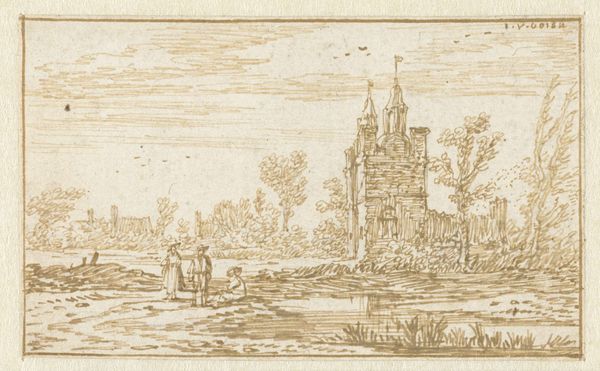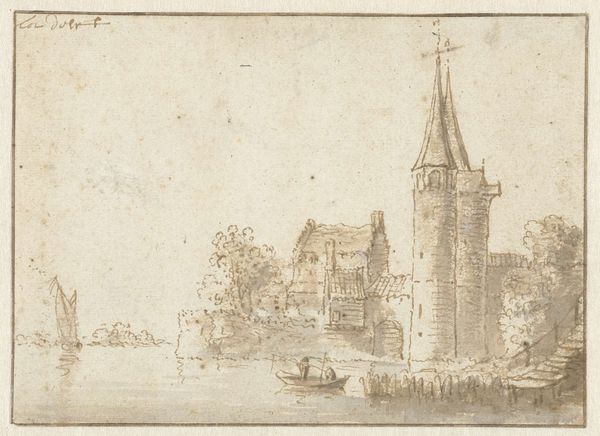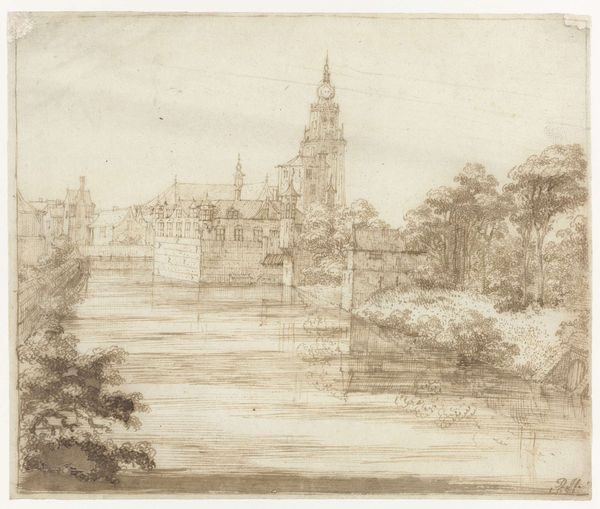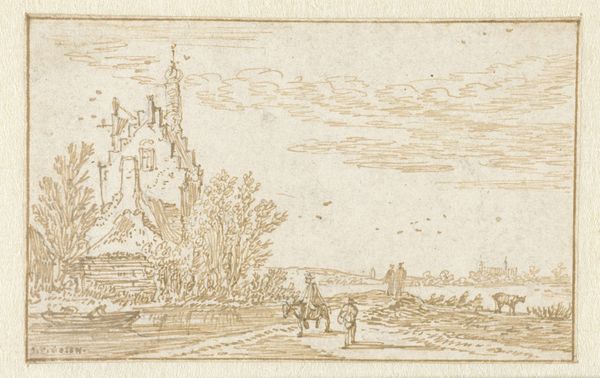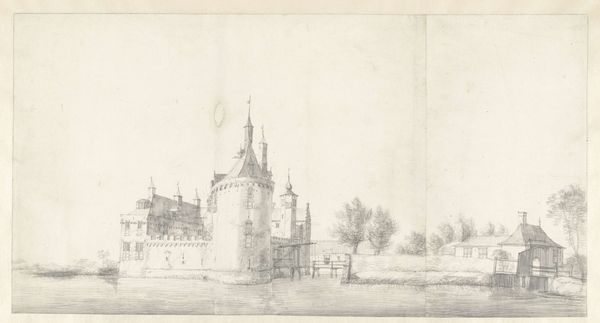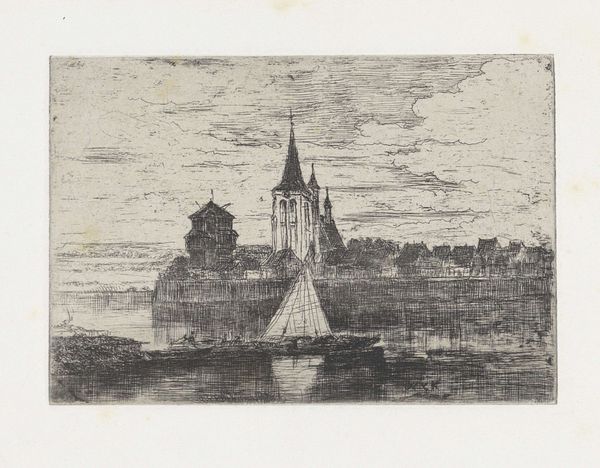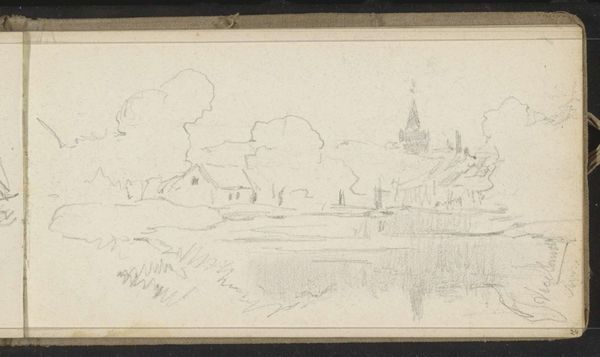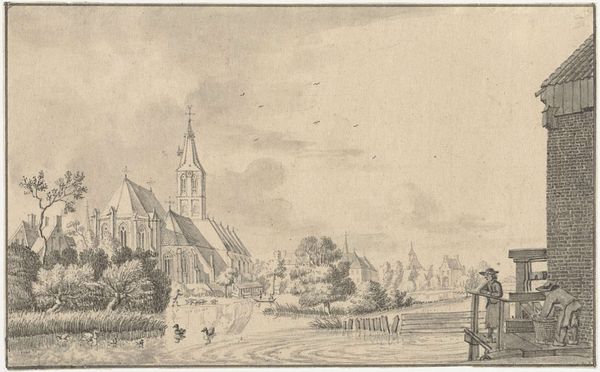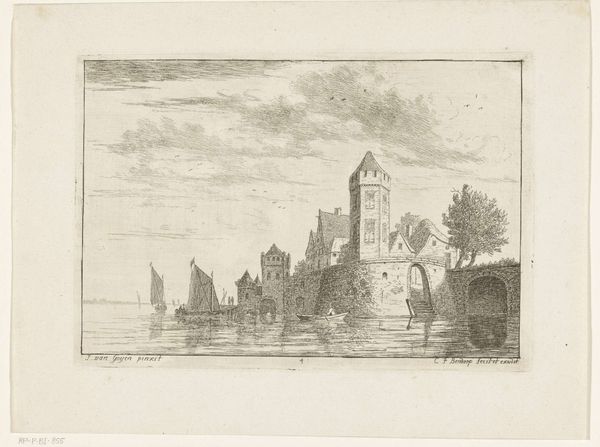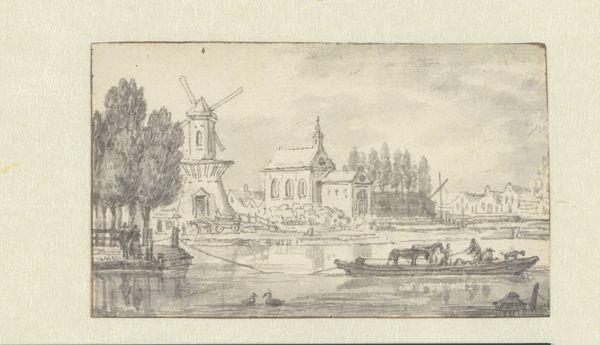
print, etching
# print
#
etching
#
pencil sketch
#
landscape
#
cityscape
#
realism
Dimensions: height 140 mm, width 177 mm
Copyright: Rijks Museum: Open Domain
Curator: This etching, titled "Gezicht op het stadsdeel Wyck te Maastricht," was created by Alexander Schaepkens around 1840. The Rijksmuseum houses this little treasure. Editor: Oh, it’s diminutive but mighty. My first thought is: a peaceful melancholy. The delicate lines create a muted world, almost dreamlike, don’t you think? Curator: Absolutely. The softness comes from the etching technique itself. He’s capturing Wyck, a district in Maastricht, with an almost photographic realism but still imbues it with personal feeling. Editor: But isn't there something subtly political at play here? I mean, landscapes and cityscapes were rarely just passive depictions of pretty scenes, right? Considering the period, early 19th century, the rise of industrialization… Does it speak to that at all, this idealized vision? Curator: That's an intriguing point. We know Maastricht had a complex history, including being a contested city. While it lacks overt industrial imagery, the stillness may hint at a desire for stability. The sailing boat gently gliding and old buildings show trade, travel and history peacefully together. Editor: The church dominating the skyline adds a certain… weight, doesn’t it? It is also important to remember that the 1840s were also the start of photography, a challenge to art at that time, could that have had an effect here? Curator: Definitely. And Schaepkens must have felt it. The meticulous rendering of details like roof tiles and reflections in the water demonstrate the traditional craftsmanship. It asserts value in hand-created art. Editor: So, it’s both nostalgic and perhaps a quiet act of artistic preservation, asserting a particular version of place in a time of fast change. The simplicity lets us glimpse its world and reflect. A reminder of how time shifts our perceptions and landscapes. Curator: Indeed. I am happy to reflect that every work has its own time line and connection. And just like our memories that constantly change the context in our minds.
Comments
No comments
Be the first to comment and join the conversation on the ultimate creative platform.
